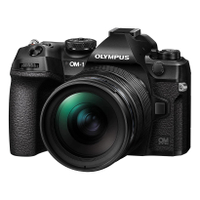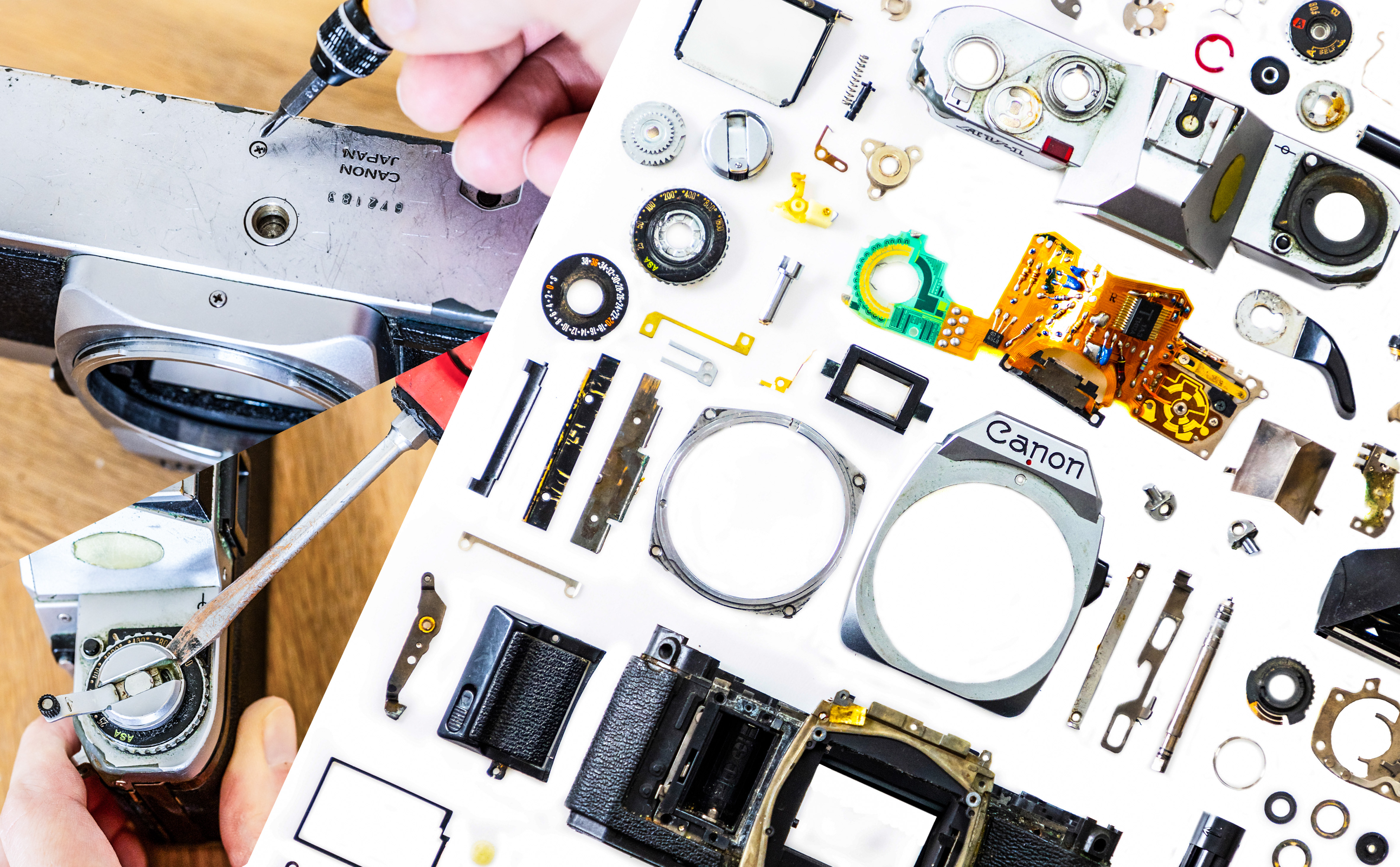Digital Camera World Verdict
It's hard to fault the OM System OM-1 Mark II. Yes, it's similar to its predecessor, but the differences are huge ones – including one that's so significant, I wish every camera had it. In my opinion, this is the ultimate outdoor camera: it's astonishingly weather-proofed, its compactness is unparalleled, it negates the need for both ND filters and grads, it matches full frame sensors for ISO noise and actually beats them for dynamic range, the improved autofocus is super-reliable even for birding, and the 2x crop factor is a secret weapon for wildlife.
Pros
- +
Software-based ND / grad filters
- +
8.5 stops of stabilization
- +
120fps burst shooting
- +
IP53-certified weather sealing
Cons
- -
20.4MP native resolution
- -
Larger inherent depth of field
- -
Very similar to original OM-1
- -
Still uses SD cards
Why you can trust Digital Camera World
The OM System OM-1 Mark II has a lot to live up to. The original OM-1 was universally considered a home run – a rare example of the industry giving love not only to a Micro Four Thirds camera, but to OM Digital Solutions as a company in its first true post-Olympus product.
While I can't deny that the OM System OM-1 Mark II is similar in a lot of ways to its predecessor, it also can't be denied that it has some significant improvements – and that there is no other camera that can do what it does.
For instance, its signature feature – the Live GND filter, which is a brilliant software-powered graduated ND filter – is single-handedly enough to transform the way that you shoot landscapes.
Throw in improved autofocus, more than double the buffer depth (with a top speed of 120fps) and an industry-best 8.5 stops of in-body image stabilization, and it's time to let go of the lazy narrative that this camera is "just an OM-1 with a firmware upgrade". If you're a photographer who works outdoors, this may be the best camera you'll ever use.

OM System OM-1 Mark II: Specifications
| Row 0 - Cell 0 | Row 0 - Cell 1 | Row 0 - Cell 2 |
| Sensor | 20.4MP stacked back-side illuminated | Row 1 - Cell 2 |
| Format | Micro Four Thirds | Row 2 - Cell 2 |
| Lens mount | Micro Four Thirds | Row 3 - Cell 2 |
| Autofocus | 1053 cross-type hybrid phase detect | Row 4 - Cell 2 |
| Image stabilization | Up to 8.5 stops | Row 5 - Cell 2 |
| ISO range | 200 to 25,600 (exp 80 to 102,400) | Row 6 - Cell 2 |
| Video | Up to 4K 30p (High-Speed FullHD 240p) | Row 7 - Cell 2 |
| Viewfinder | 5.76 million-dot EVF, max 1.65x magnification | Row 8 - Cell 2 |
| LCD | 3-inch, 1.62 million-dot vari-angle touchscreen | Row 9 - Cell 2 |
| Memory | 2x UHS-II SD card | Row 10 - Cell 2 |
| Max burst | 120fps (213 RAW / buffer 92 RAW + 92 JPG) | Row 11 - Cell 2 |
| Connectivity | WiFi, Bluetooth, USB-C, Micro HDMI, headphone jack, microphone jack, sync socket | Row 12 - Cell 2 |
| Size | 138.8 x 91.6 x 72.7mm | Row 13 - Cell 2 |
| Weight | 511g body only / 599g (with battery + memory card) | Row 14 - Cell 2 |
OM System OM-1 Mark II: Price & availability
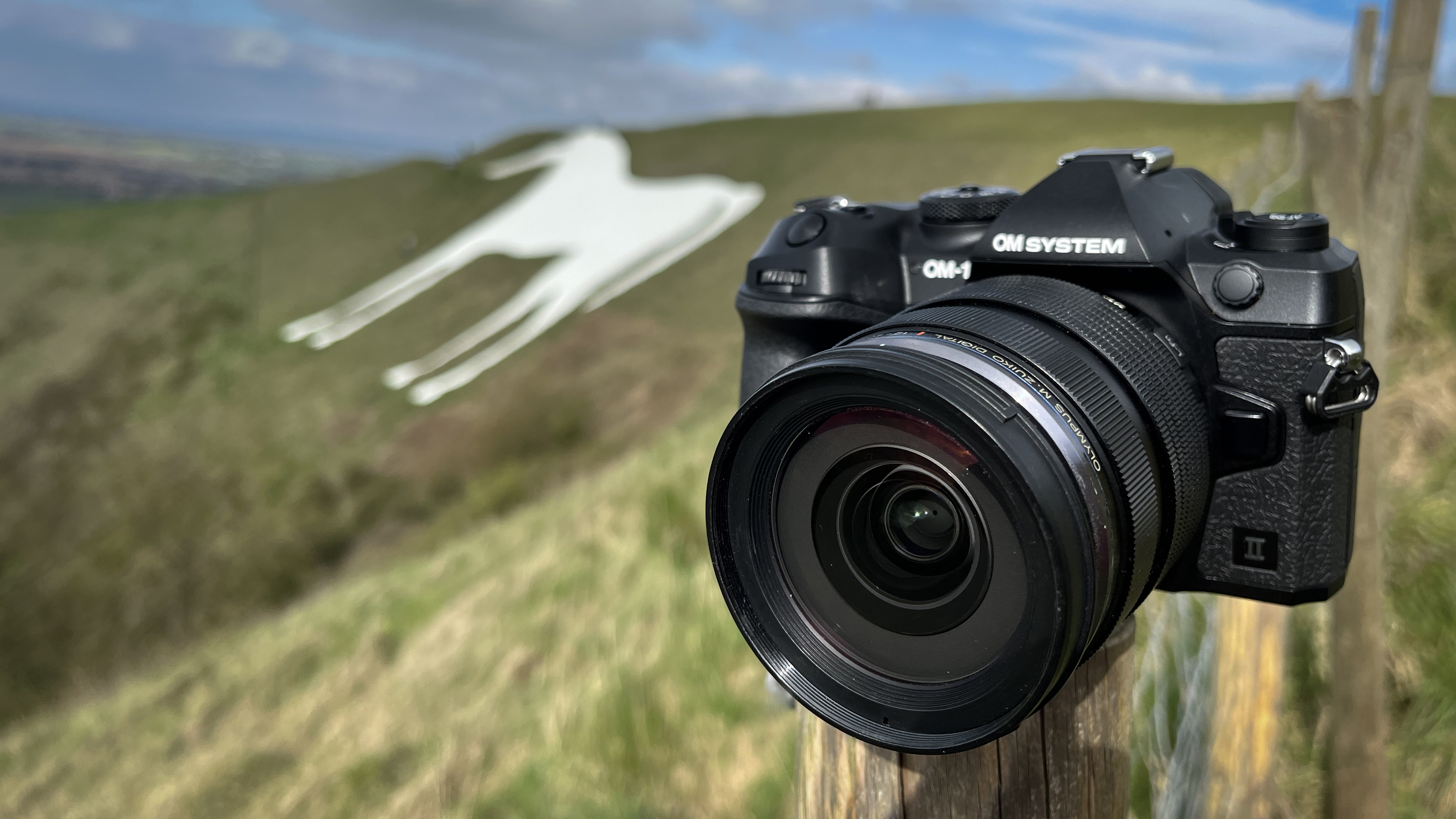
The OM-1 Mark II is priced $2,399 / £2,199 / AU$3,799 – a very reasonable price for such a powerful camera, but many people have a prejudice against this kind of price for a Micro Four Thirds camera.
In terms of how this compares to its predecessor, in the US you're only looking at a price difference of about $400. However, the original OM-1 is currently very aggressively priced in the UK and Australia – available for as little as £1,378 and AU$2,102 at the time of writing. It's worth noting that its closest rival, the Panasonic G9 II, is considerably cheaper at $1,897 / £1,689 (though it's about the same price in Australia).
If you only equate value to sensor size then you might feel that the OM-1 Mark II is overpriced. But if you actually look at the features on offer, this is a very appropriately priced camera.
OM System OM-1 Mark II: Build & handling
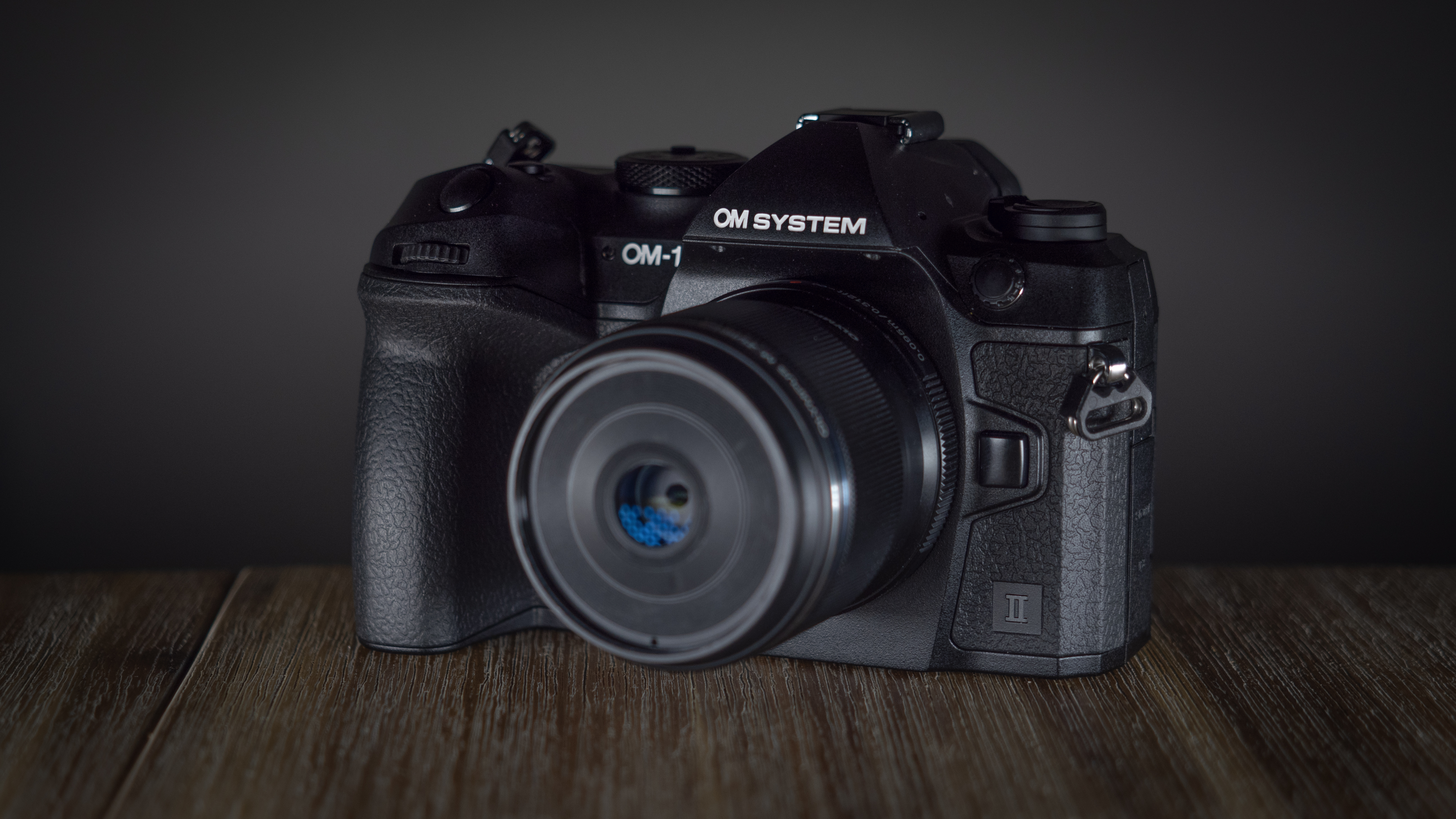
Not only is the OM-1 Mark II itself compact – crucially, so are the lenses
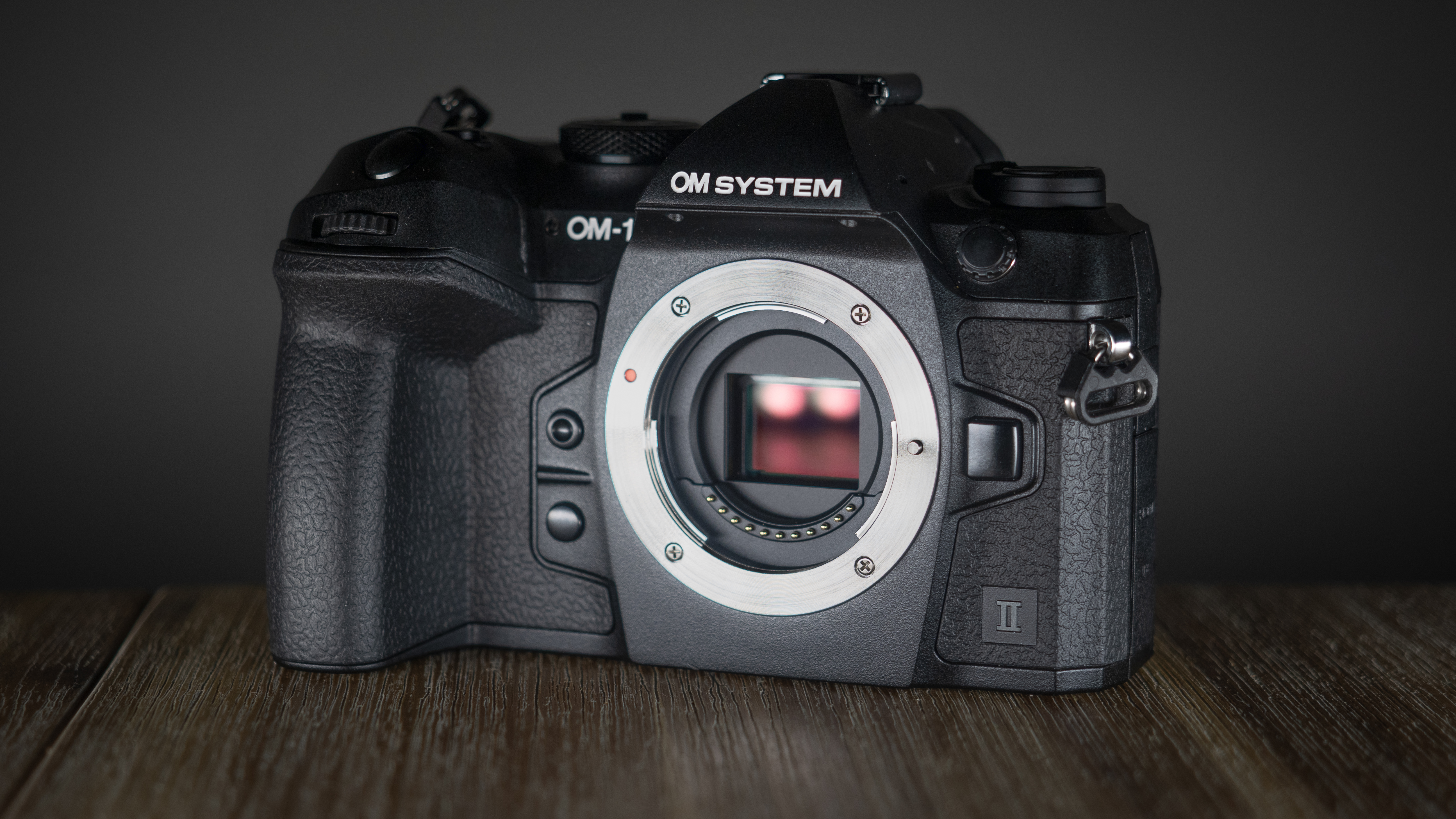
The 20.4MP Micro Four Thirds sensor can capture 50MP handheld or 80MP on a tripod, via the magic of pixel-shift

The Micro Four Thirds mount is an open standard, and there are hundreds of first- and third-party lenses
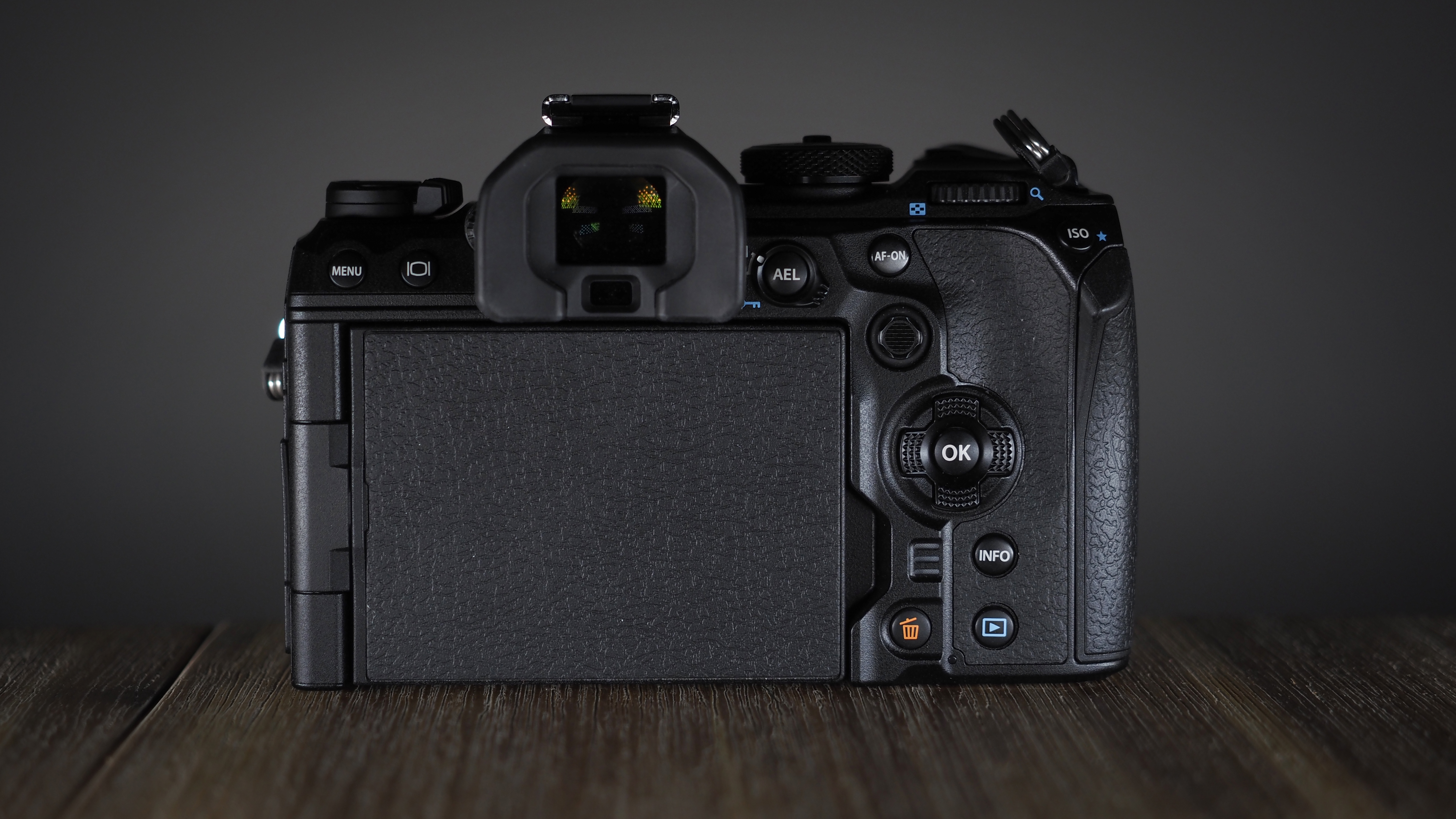
The electronic viewfinder is a 5.76 million-dot affair, offering crystal clarity for shooting and reviewing

The rear screen is fully articulating, for low and high angle shots, which I find every bit as useful for stills as video

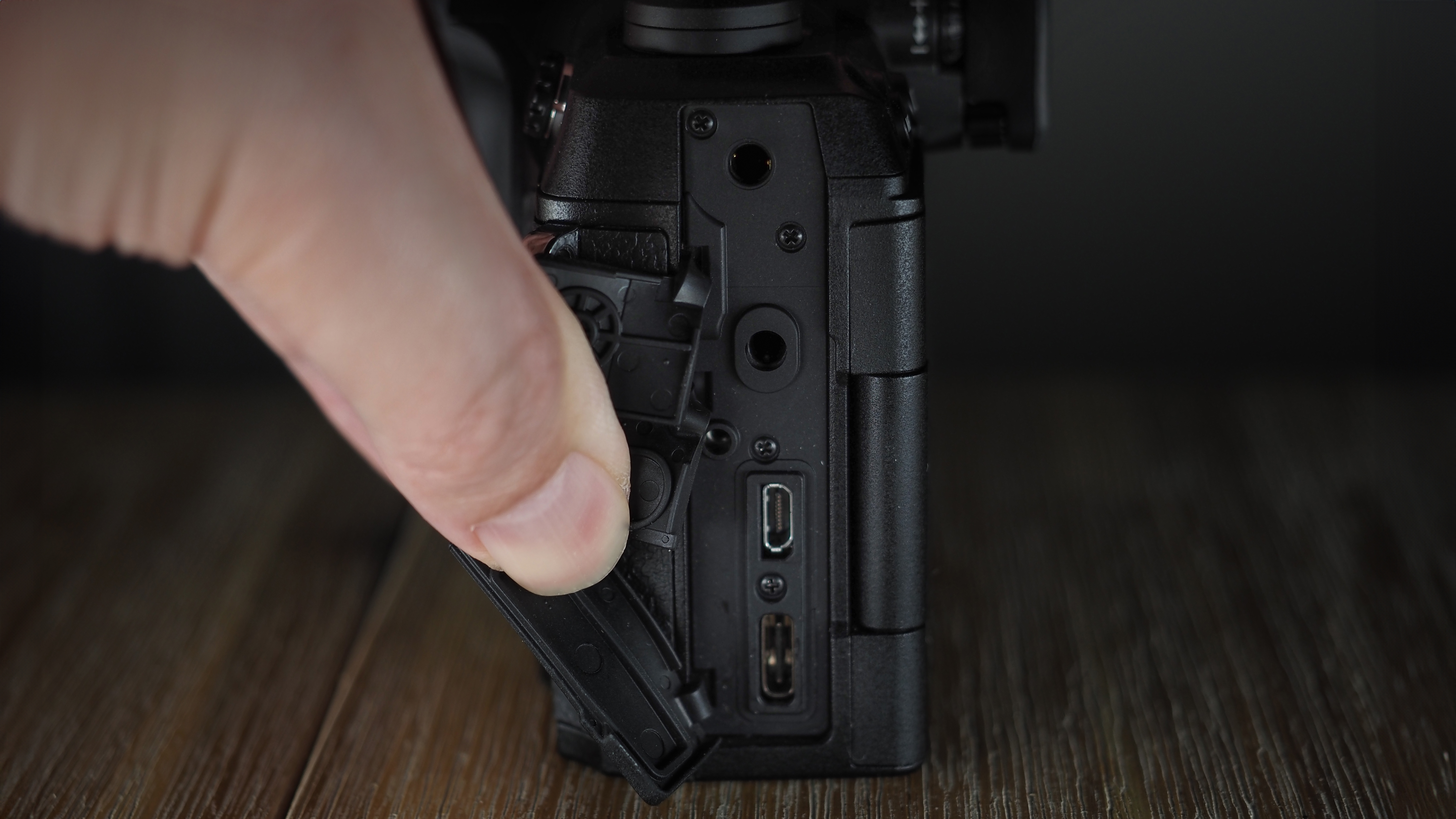
The OM-1 Mark II comes with headphone and microphone jacks, a Micro HDMI port and a USB-C port
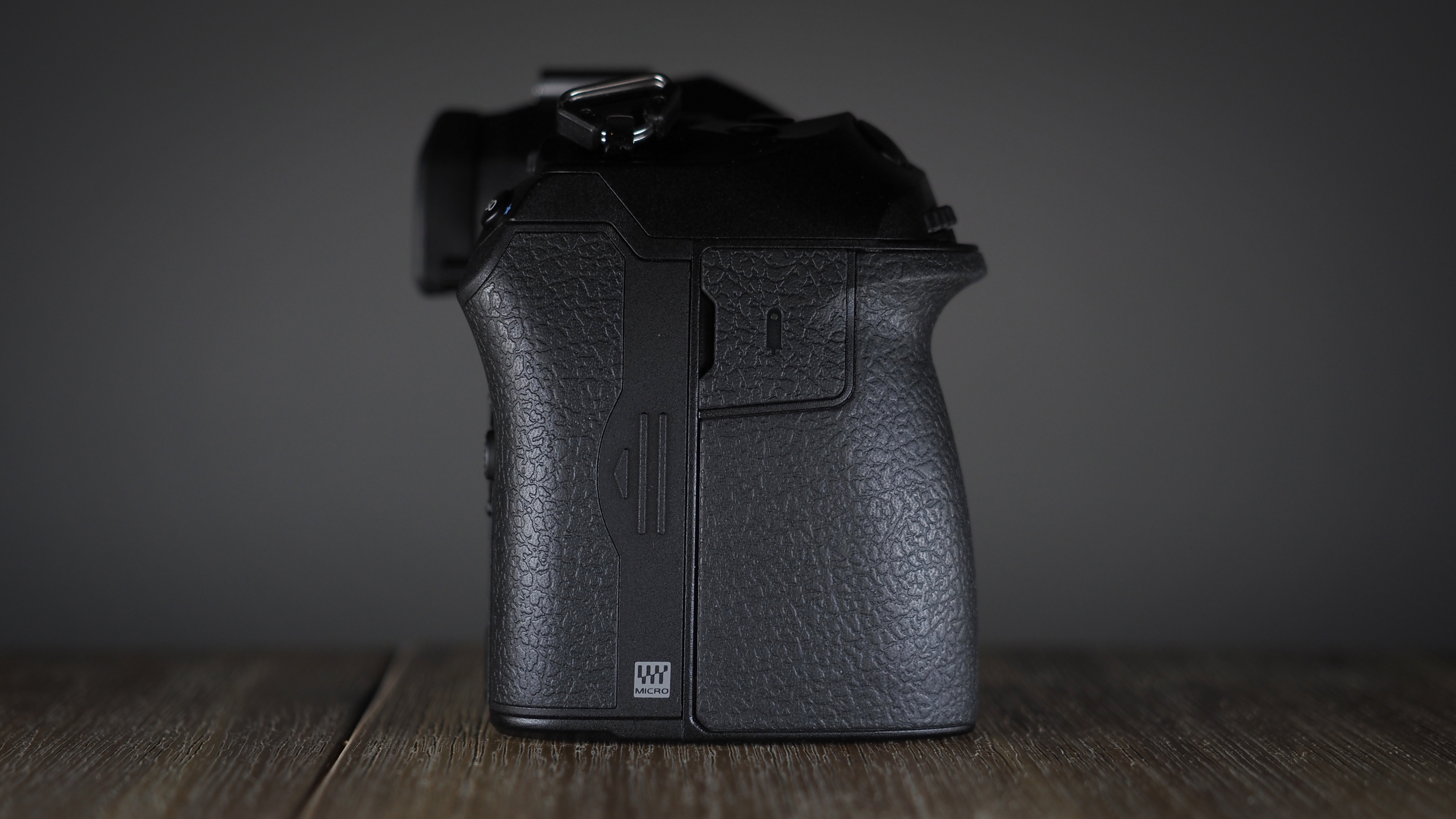
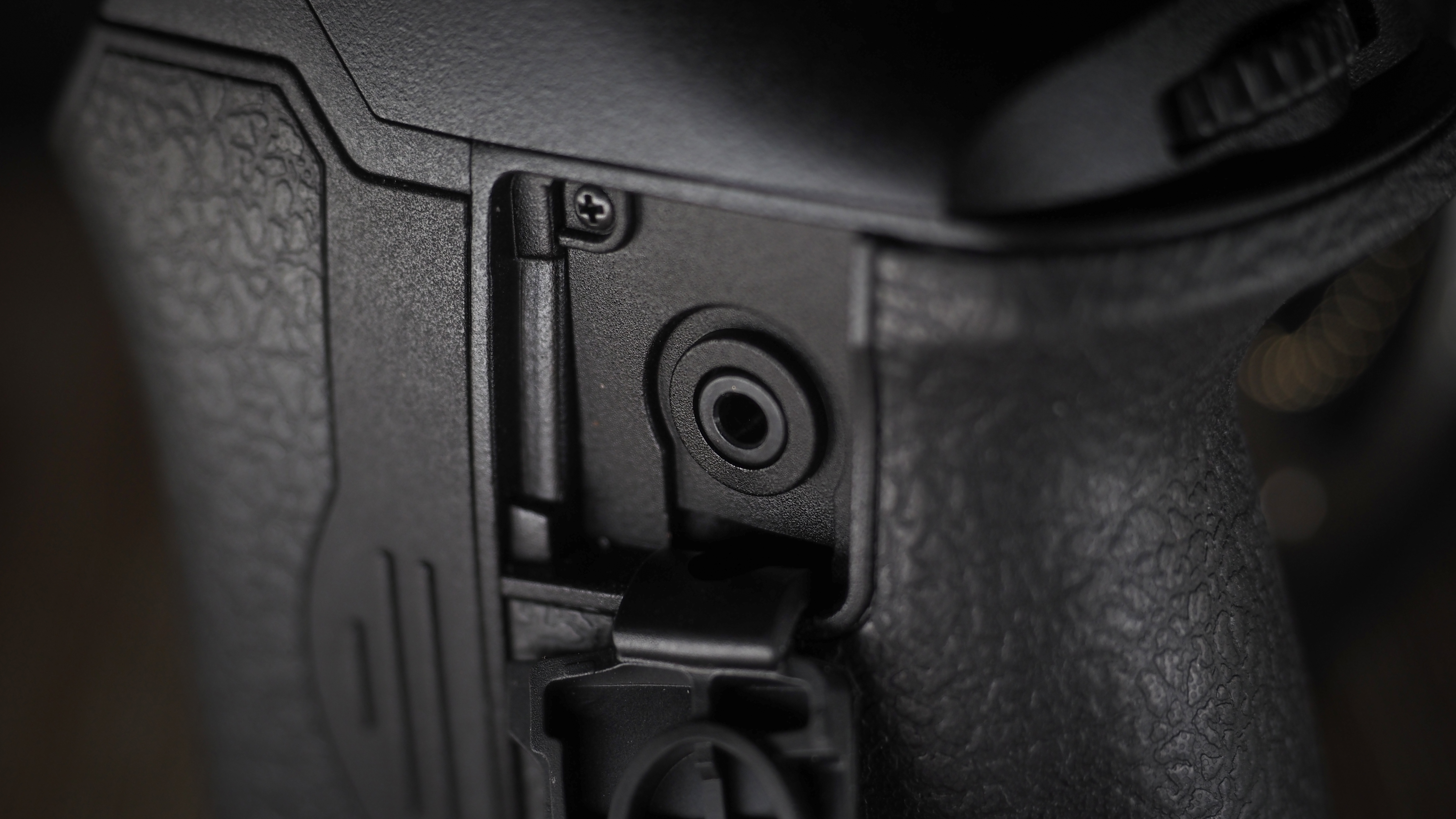
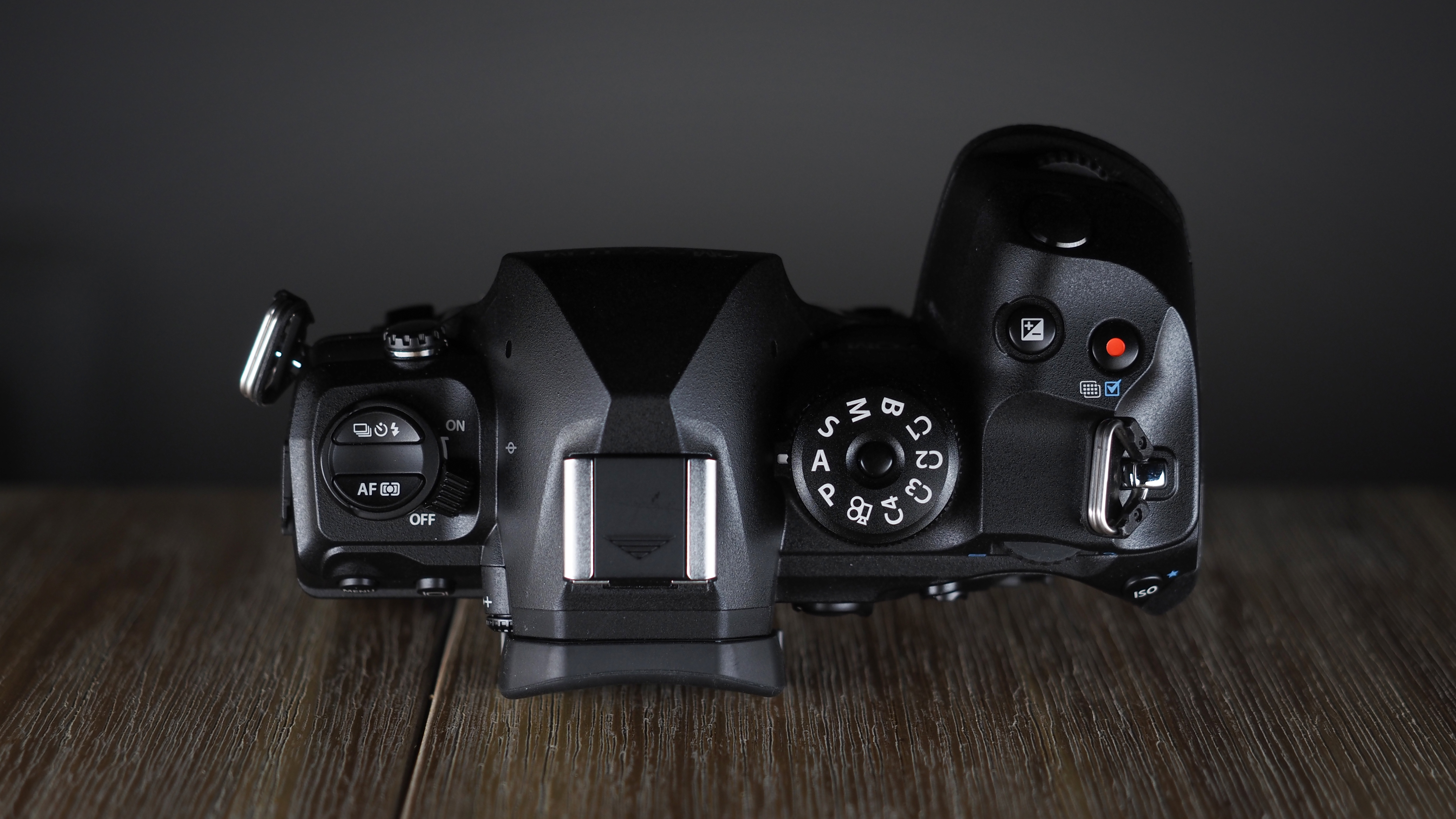
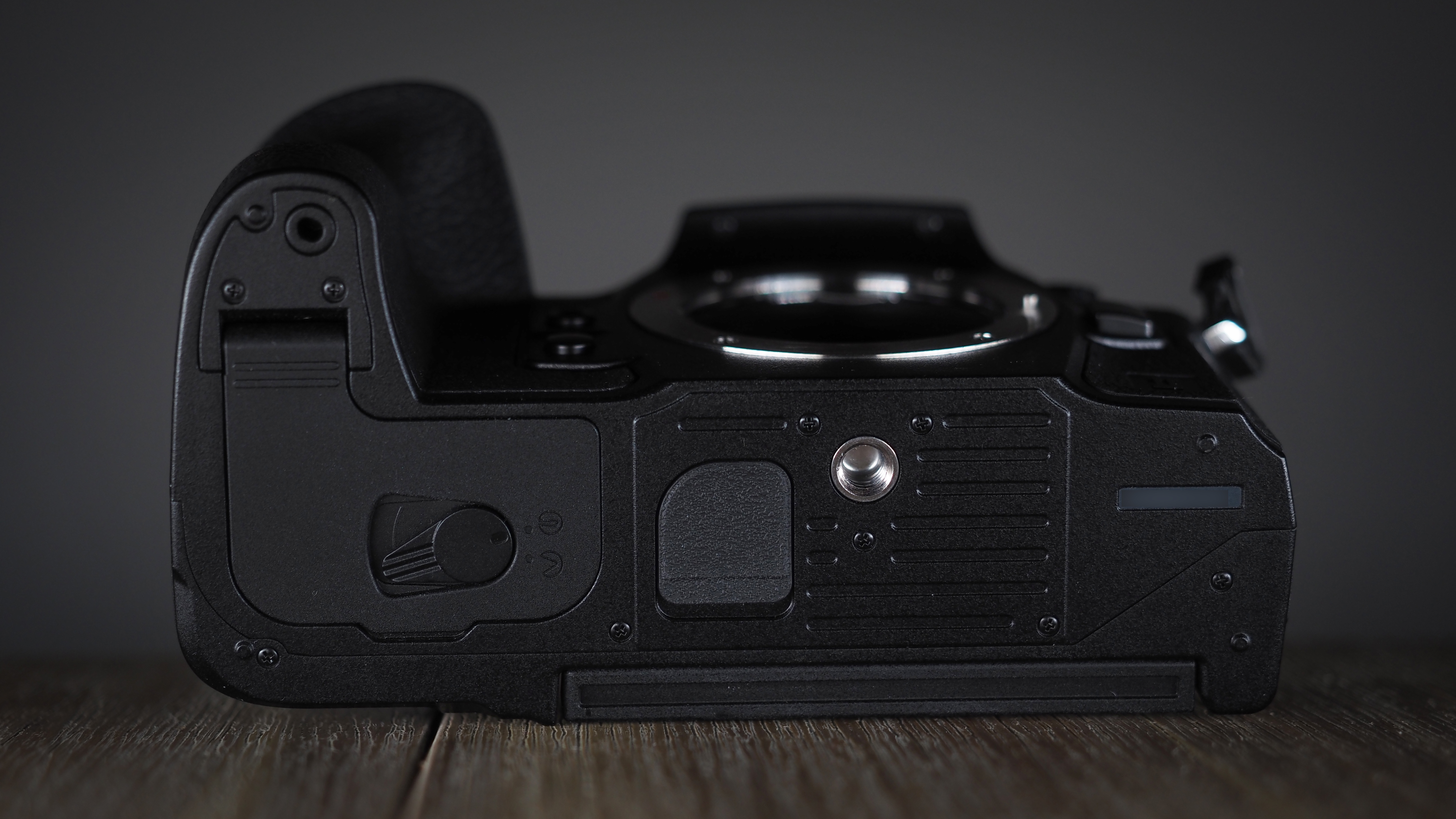
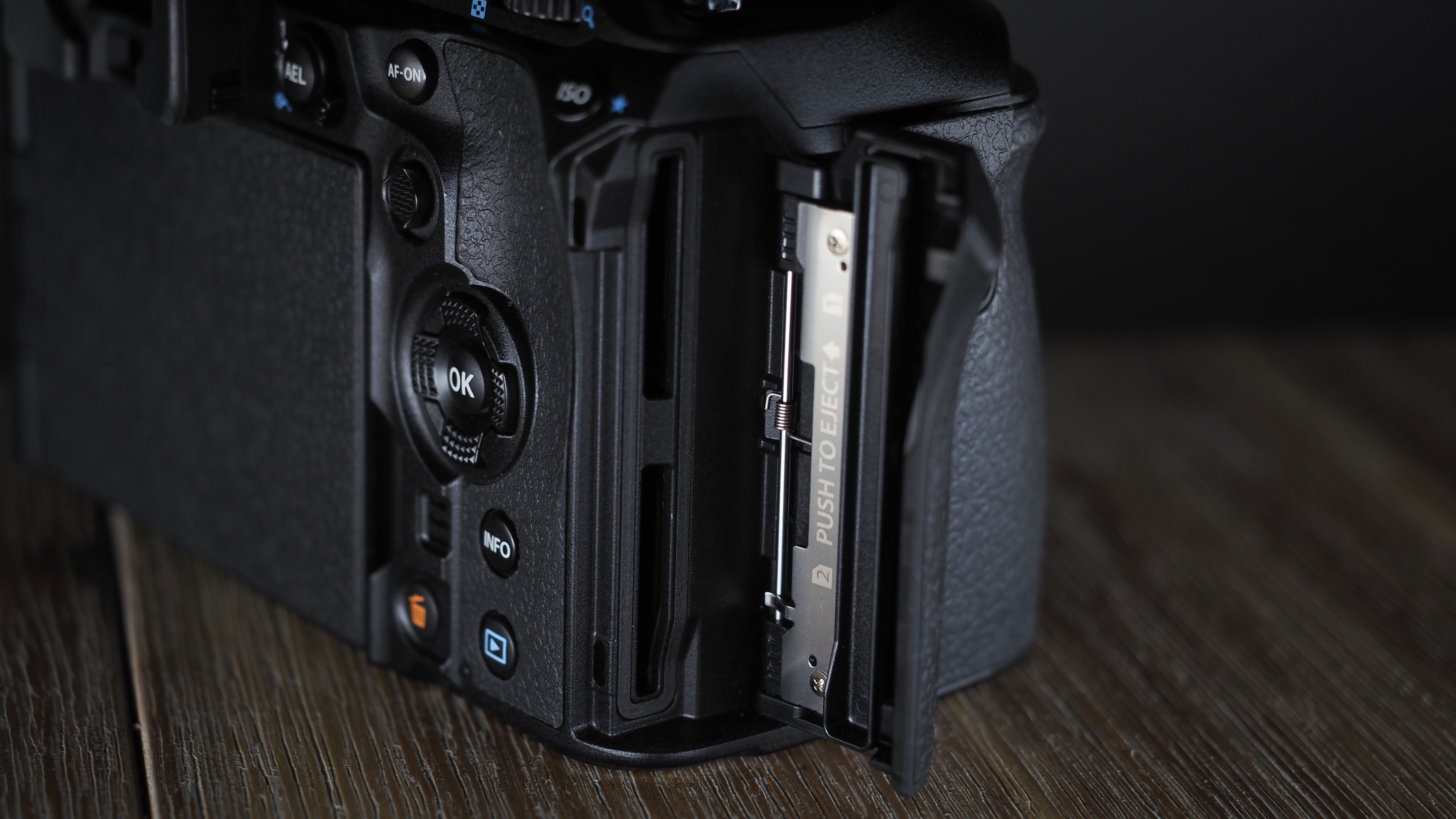
Twin UHS-II SD slots mean that you can keep your files safe in case of a card failure

The high-capacity BLX-1 battery is good for up to 500 shots per charge
Externally the OM System OM-1 Mark II looks, feels and is virtually indistinguishable from its predecessor. I love that it keeps the silhouette and handling from the old Olympus OM-D E-M1 series, so you get a nice chunky grip, instinctive control layout, and a responsive joystick.
The only noticeable changes on the outside are the newly rubberized control dials (replacing the plastic ones that many felt didn't offer enough grip) and the OM System logo replacing the old Olympus one (which may have been the main reason to release a Mark II, if you subscribe to the theory that OM System was only allowed to use the Olympus branding for two years following the sale).
Despite being lightweight, the build quality is super robust. The body is IP53-certified, making it one of the most weather-sealed cameras you can buy (when paired with an appropriate weather-sealed lens!) – perfect for challenging conditions such as rain, dust and snow.

Something that doesn't get talked about enough is OM's Super Sonic Wave Filter, which is a crucial complement to weather sealing. I can't tell you the number of times I've used Sony cameras and ended up with dust on the sensor, simply from changing lenses; the Filter on the OM vibrates the sensor 30,000 times per second when you power on the camera, shaking loose any particulates.
The fully articulated rear screen is perfectly serviceable, with 1.62 million dots of resolution, but the 5.76 million-dot electronic viewfinder really shines. It offers all the detail you need during shooting, and also enables you to really punch into your images to check them out and examine fine detail and focus.
This isn't something that bothers me, but I know that some "reaction shooters" prefer the power switch to be on the right-hand side of the body (for quicker, one-handed activation when the action starts unexpectedly). Here the switch is on the top-left, so that's potentially something to be aware of.

OM System OM-1 Mark II: Performance
Everything I asked of this camera, it knocked out of the park. Let's start with what's new here, namely the headline feature: Live GND, which is the coolest camera feature I've ever used.
It's the next evolution of Olympus / OM System's Live ND filter: a software-driven feature that gives you an in-camera neutral density filter (up to a 7-stop on the OM-1 Mark II) without the need for a physical filter on your lens.
Live GND, as you might have guessed, is a software-powered ND grad filter – and again, it gives you an in-camera grad without needing one on your lens. Here's a quick look at how it works:


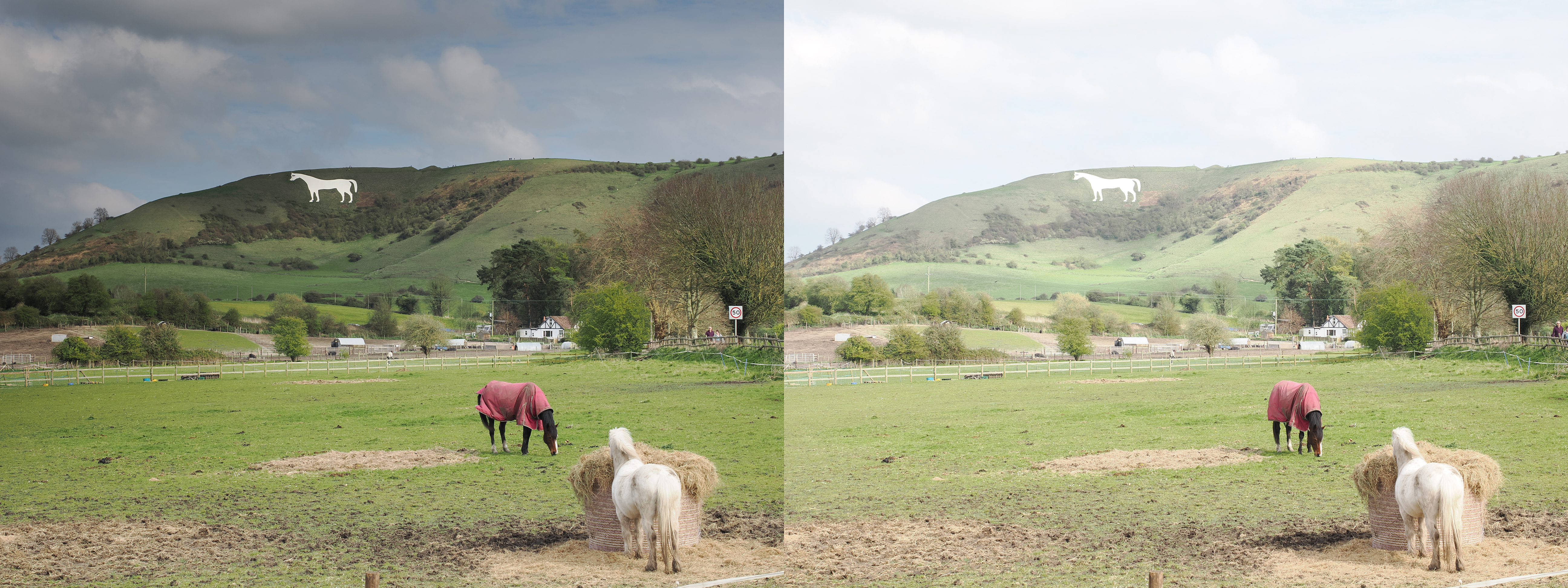
Powering Live GND is increased onboard RAM in the OM-1 Mark II, which also provides the muscle for any number of new features – which is why this camera is much more than "just an OM-1 with a firmware update".
The in-body image stabilization, for example, now delivers an industry-best 8.5 stops of compensation – all thanks to the increased algorithmic power made available by the increased memory.
And while it's admittedly hard to discern the half-stop difference between the 8 stops offered by the OM-1 (using Sync-IS lenses), I shot extensively at 1200mm with the new M.Zuiko 150-600mm lens – and it was absolutely rock-solid for stills and video alike.

The autofocus is improved, too. Not only is subject tracking significantly better, enabling me to keep up with birds in flight at a much-improved rate, but AI Detection AF for humans has also been introduced (and added to the main subject detection submenu, rather than being separate) – again, a result of the increased RAM.
Birding is one of the trickiest challenges for any AF system, and one that Olympus / OM has occasionally struggled with. I was amazed when photographing birds – and humans, too – that subject detection is stickier than ever, even when foreground objects threaten to trick the autofocus.
What else has been improved on the OM-1 Mark II that can't be achieved via firmware? The buffer depth has more than doubled, topping out at 213 RAW files when shooting blackout-free 120fps bursts (it should be noted that 120fps is only offered with locked focus, but full AF is offered at up to 50fps shooting).

While 120fps is amazing, a feature I'm personally grateful for is the addition of slower burst rates. The OM-1 Mark II can now shoot at 12.5 or 16fps – which is ideal for situations where 25, 50 or 120fps are just overkill.
The Hi-Res Shot has been improved, too, now offering 14-bit depth when shooting 50MP handheld or 80MP tripod shots. I don't use this mode super often, but since I treat it as "ultimate image quality mode" I really appreciate that it now delivers RAW files with even better detail.
And of course, there's all the "standard" features like Live Composite (for easy light painting, lightning shots and star trails), IP53-certified weather sealing, and in-camera focus stacking – which I learned from my buddy Chris Nicholls is a feature exclusive to OM System, because it owns the patent (so other cameras can bracket photos, but only OM can stack them in-camera).

So what are the OM-1 Mark II's weak spots? Unsurprisingly, it's video. Which isn't to say that the video is bad, because it's not; it's just not a patch on a more video-conscious body like the Panasonic G9 II.
The FullHD and 4K footage I shot looks great. The 8.5 stops of stabilization makes it not only possible but practical to shoot handheld at 1200mm. And the AF is brilliant at picking up and staying with subjects. But 8-bit video is ho-hum, and 10-bit still has the baffling issue of hiding the histogram so you can't monitor your exposure.
The video modes here are perfectly fine, and OM has always been a photography-oriented brand, but if you're a video-first or hybrid shooter then something like the G9 would be a better bet.

OM System OM-1 Mark II: Sample photos






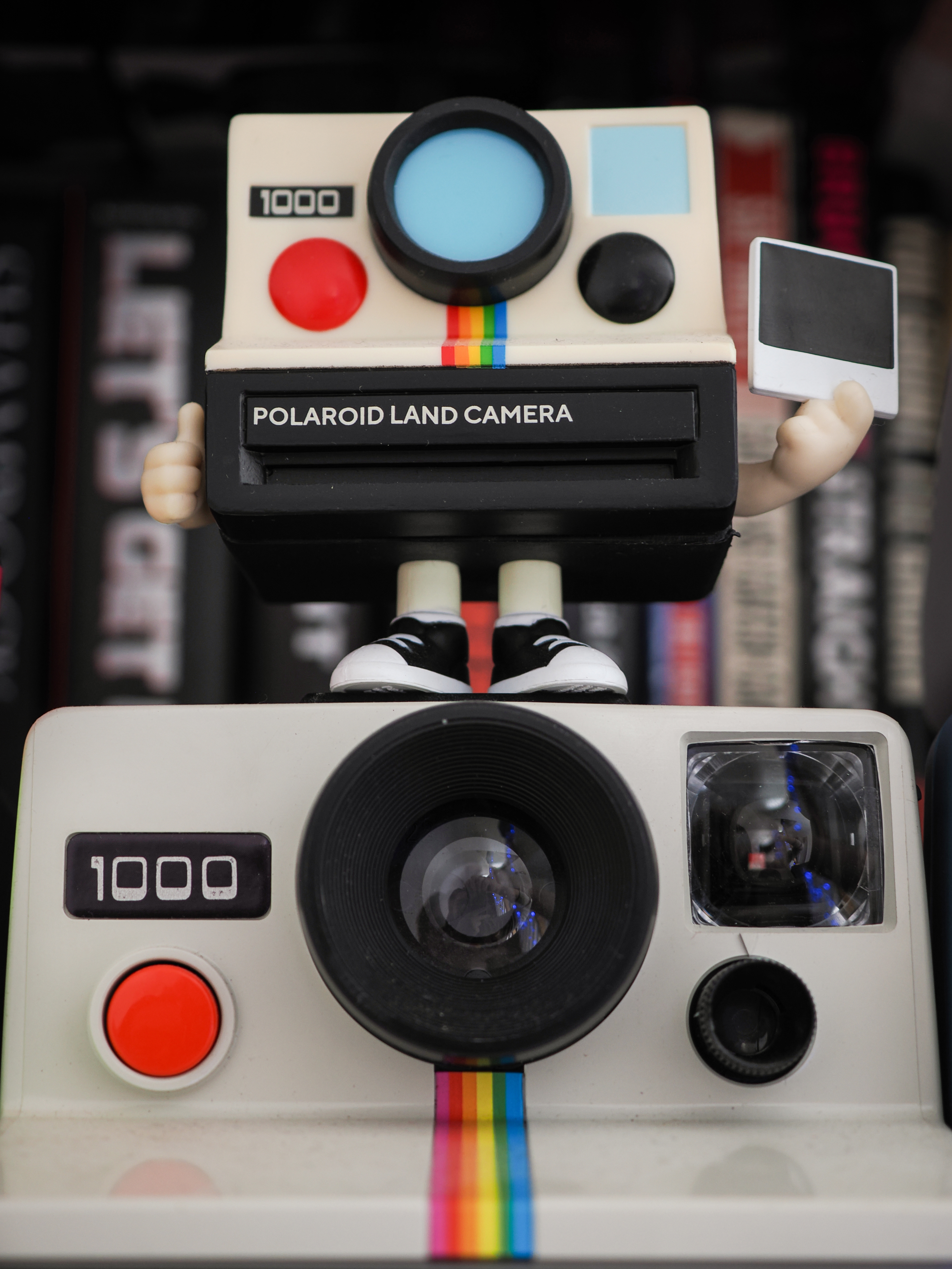

OM System OM-1 Mark II: Sample video
OM System OM-1 Mark II: Lab data
For our lab data comparison, we chose three competing high-end cameras priced in line with the OM-1 Mark II: the Canon EOS R6 Mark II, Nikon Z 7II, and the Sony A7 IV. Let's see whether this MFT camera can match the image quality of rivals with considerably larger full-frame sensors.
We test resolution using Imatest charts and software, and dynamic range and signal to noise ratio with DxO Analyzer.
Resolution:
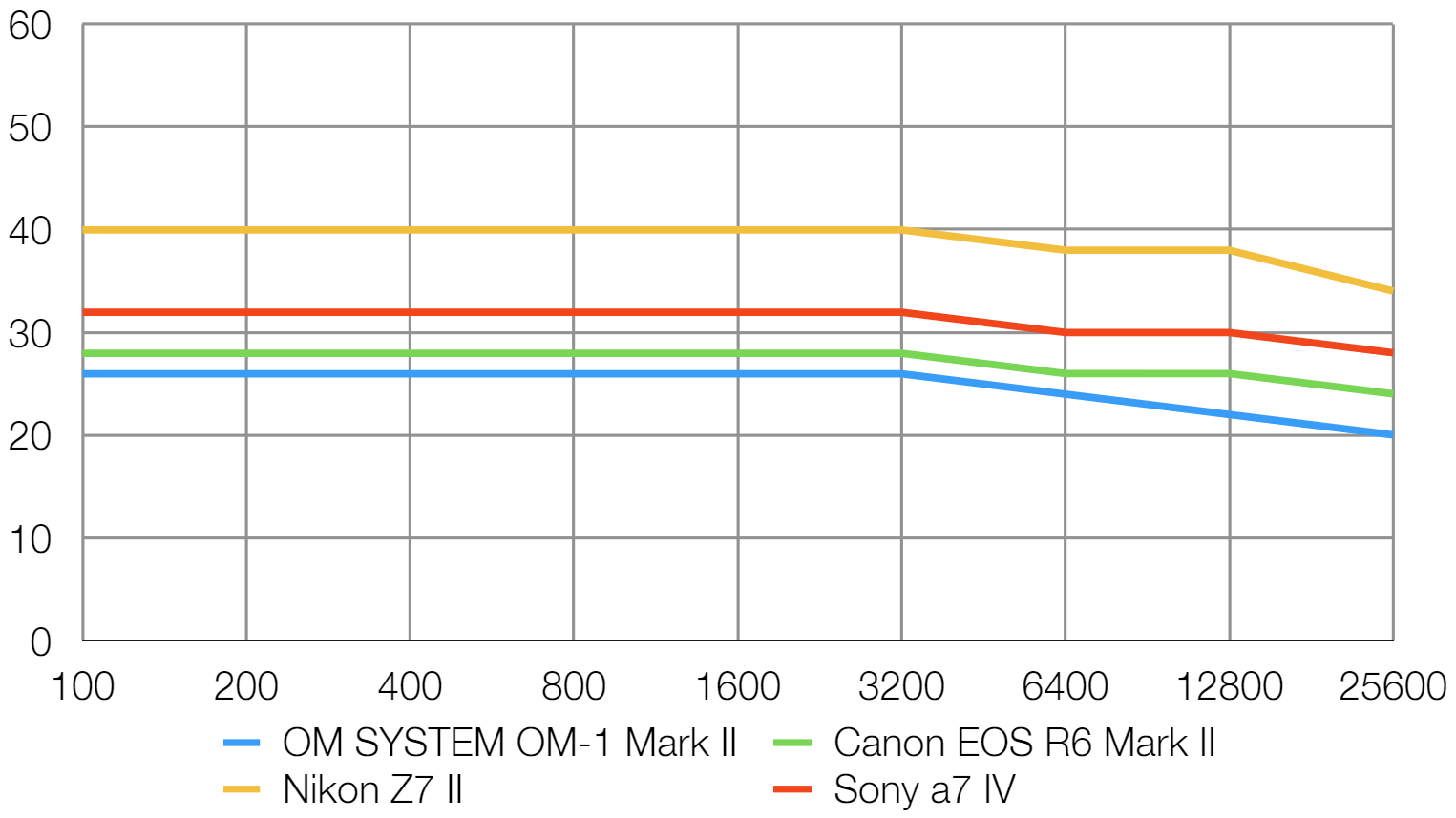
Inevitably with only 20.4 megapixels on tap, the OM-1 Mark II was never going to beat a camera like the Nikon Z 7II for outright resolving power. Even so, it's impressive that it gets so close to the Canon EOS R6 Mark II, despite the OM-1's considerably smaller sensor.
Dynamic range:
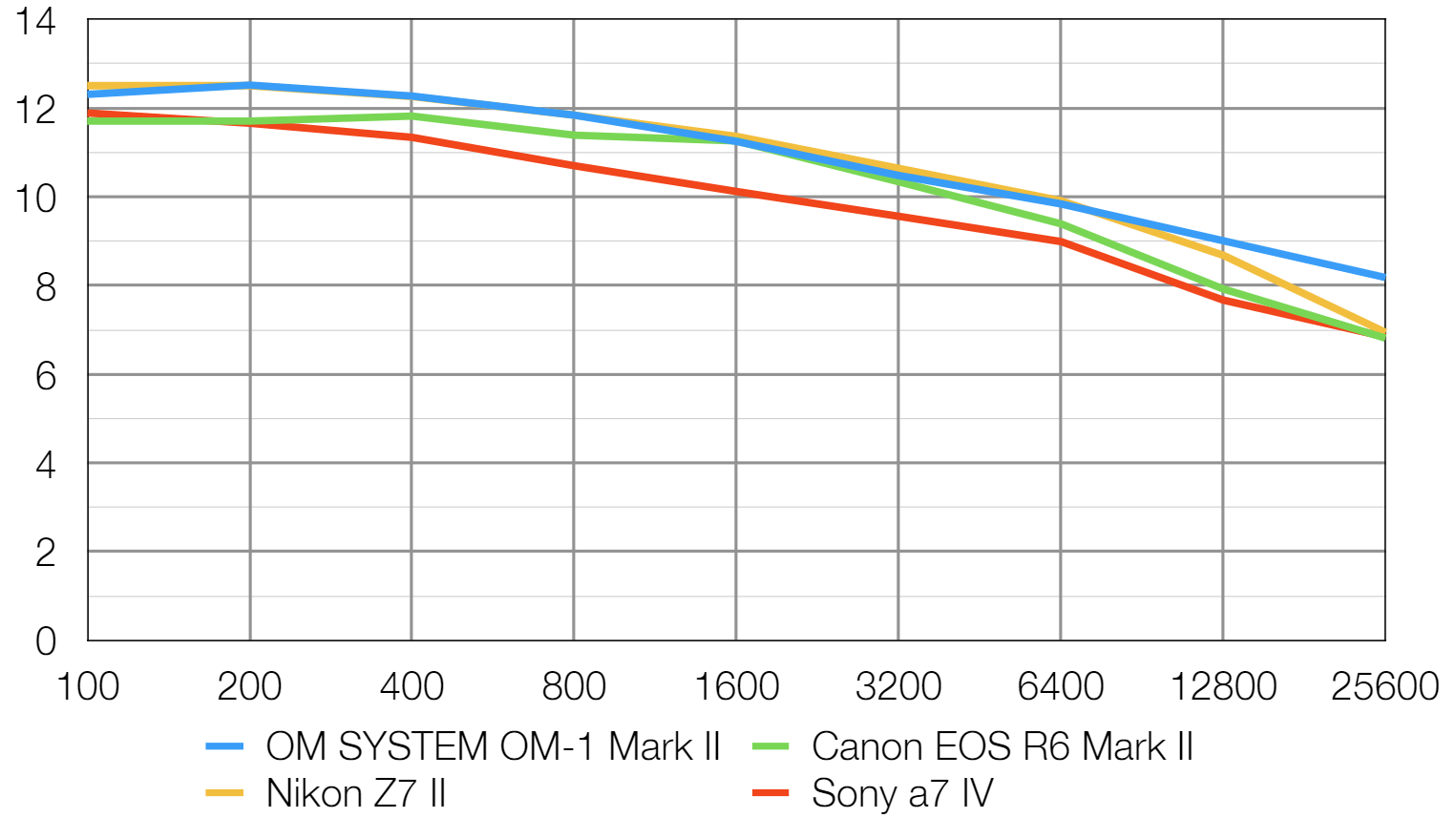
Not only does the OM-1 Mark II match its full-frame rivals for dynamic range, it actually comes out on top - a stellar performance.
Signal to noise ratio:
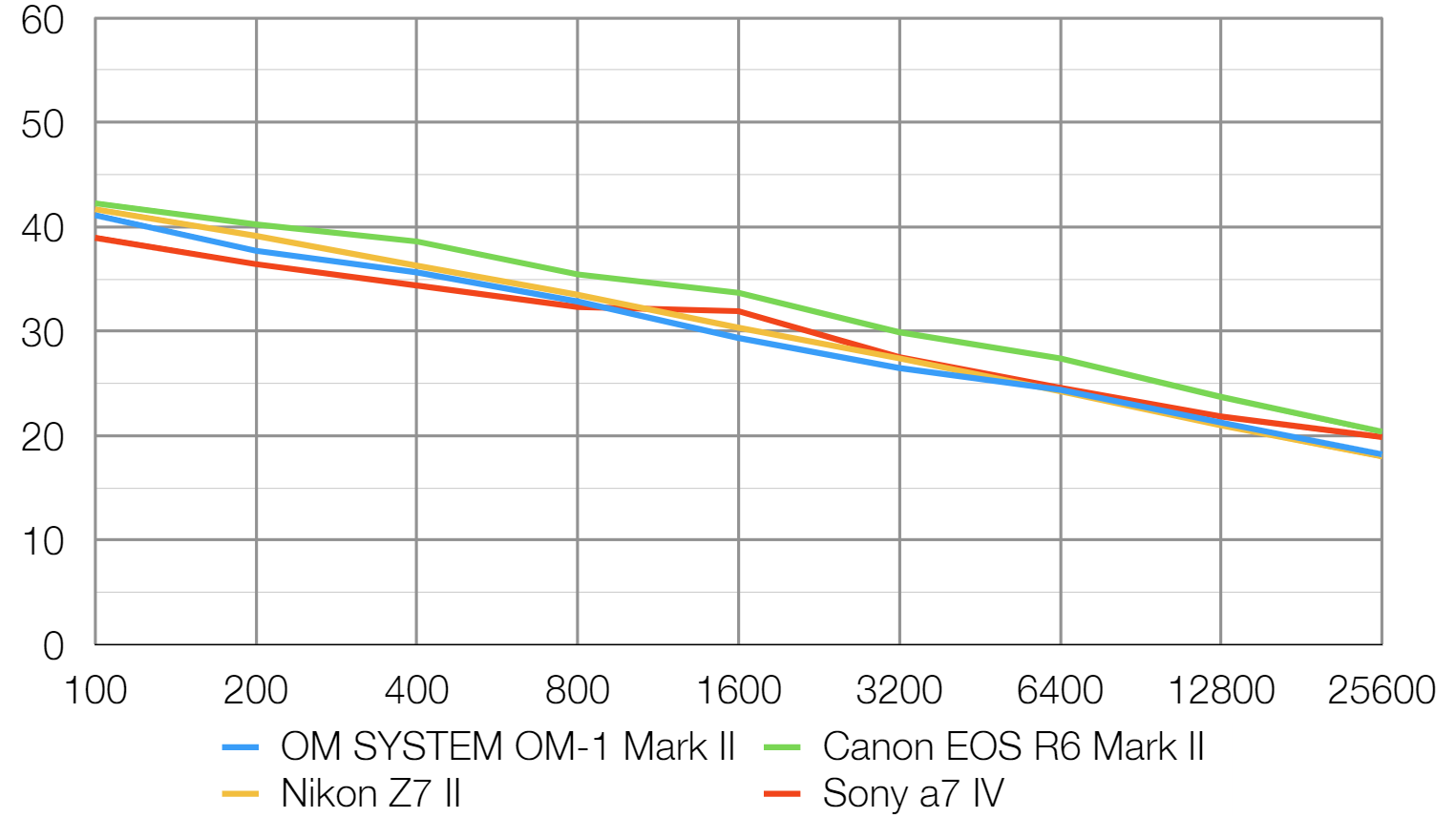
This test compares the amount of random noise generated by the camera at different ISO settings as a proportion of the actual image information (the 'signal'). Higher values are better and we expect to see the signal to ratio fall as the ISO is increased.
More proof that a smaller sensor doesn't need to compromise image quality: while the OM-1 Mark II can't quite produce the cleanest images of the group, it does at least equal the Z 7II and A7 IV throughout the tested ISO range.
OM System OM-1 Mark II: Verdict
If this review has done one thing, I hope that it's dispel the myth that the OM-1 Mark II is just a glorified firmware update. Could a Mark II camera do even more? It certainly could. However, this camera does things that the original OM-1 can't do – and things that no other camera on the market can dream of.
OM System has repositioned itself as an outdoor and adventure camera specialist. And indeed, if you're an outdoor photographer who shoots landscapes in particular, I can't think of a better camera to take out in your pack with you.
But it's such a shame to pigeonhole this as just "a landscape camera" or "a wildlife camera". Yes, those are its specialties, but this is a supremely confident and capable camera that is fantastic for so many more genres.

I personally love it for shooting portraits, particularly paired with the M.Zuiko 75mm f/1.8 or an old manual lens. It's also phenomenal for macro, where the broader depth of field and in-camera focus stacking and bracketing make the process so much simpler.
The OM System OM-1 Mark II is the cleverest camera on the market – and its computational photography is nothing short of wizardry. Get this, and you'll get shots that no other camera can.
And please ignore the anti-Micro Four Thirds rhetoric! Just look at our lab data and you can see that this sensor more than holds its own against (and in some cases outperforms) full-frame rivals.
OM System OM-1 Mark II: Alternatives
While the Mark II offers some significant upgrades, the original OM System OM-1 is a worthy alternative if you can find it at a good price, with most of the same specs, features, functions, and the same body and weather sealing.
If you want a pure outdoor device then the OM System Tough TG-7 is the ultimate waterproof, freezeproof, shockproof, crushproof camera with a 12MP sensor and 24-100mm optical zoom lens with built-in macro modes.
You may be interested in the best Micro Four Thirds lenses – which features many of the best Olympus / OM System lenses.

James has 22 years experience as a journalist, serving as editor of Digital Camera World for 6 of them. He started working in the photography industry in 2014, product testing and shooting ad campaigns for Olympus, as well as clients like Aston Martin Racing, Elinchrom and L'Oréal. An Olympus / OM System, Canon and Hasselblad shooter, he has a wealth of knowledge on cameras of all makes – and he loves instant cameras, too.



